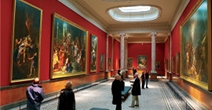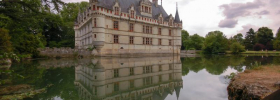 Home
Home- > Tours
- > Midi-Pyrénées
- > Tarn-et-Garonne
- > Lafrancaise
- > Welcome to sud quercy of lafrançaise
Welcome to sud quercy of lafrançaise
| Topic | Sciences and discovery |
| Departure | LAFRANCAISE (82) |
| Details | Country house of XIIIrd century, Lafrançaise is drawn up with the confluence of the Tarn and Aveyron and offers at 180 m high, a remarkable point of view on the plain of the Tarn and Lemboulas. This chief town of canton, almost 3.000 inhabitants, is among most picturesque of the area. |
Visit Lafrançaise

This green station of holidays accomodates you all the year within a framework pleasant and animated around its lake and of its base of leisures.
Lafrançaise, country house founded in 1274, was, at the XII nd century, a fort called Fort François. Several traces of Roman presence are even still visible (bridge-cascades and mill of Pontalaman). It then underwent the vicissitudes of the French history: war against the English, wars of religion. Its ramparts were destroyed during these wars. Its name also evolved: Francoise city, the Francoise, the Française then Lafrançaise. Its past, it preserved its characteristics of country house: ramparts, a perfect squaring of the streets around a commercial place where the markets are still organized Wednesdays and Sundays.
The church Georges Saint, parish church, were destroyed and rebuilt on several occasions until 1900 becoming an ogival church equipped with remarkable stained glasses.
The vault of Lapeyrouse, of its headland, offers a very beautiful point of view.
The current building goes back to 1877 and was indexed with the Monuments of France in 1992. It is of Romance style, with an inspiration of the modern Greek language and the Byzantine. Close to this vault the cemetery is where several pyramidal steles form the curiosity of the city. The abbey of Francour dates from the XII ème century and increases with the XIVth.
The church of Rouzet, mentioned with the XIVth century, was completely destroyed during the wars of religion then poorly rebuilt.
In summer as in winter, the valley of the Leisures offers a framework of calm and relaxation. The base is equipped with swimming pools in cascades with watery toboggan, lake for fishing and walks in the pedal boats, tennis court, skate park, picnic and adventure playgrounds.
Accommodation nearby
Visit Labarthe
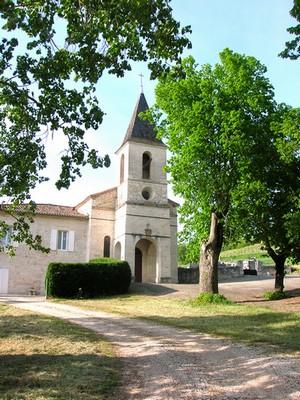
Located along the old Roman way which leads to Moissac, the village is built around the castle which is built in XIst century on an old praesidium by the baron Gaubert 1st.
The castle will be destroyed during the war against Cathares and will be rebuilt in XIIIrd century; the village develops.
The church of Nevèges becomes an important diocese. The seigniory of Labarthe depended then on the baronnie of Castelnau-Montratier.
A few years later one built also the vault Saint Géraud. After the revolution, it is on this site which the town hall will be installed in the building that we know.
After being remained a long time with the abandonment, the castle is restored little by little. It is essential now with pride in a preserved and green landscape.
Fatherland of Antonin Perbosc, poet occitan born in 1861, Labarthe is today a primarily rural and agricultural, a corner of Quercy, charming and authentic commune. The children go there to school, the mill Saint Géraud turns again thanks to the miller baker. The teaching farm of Martin Saint welcomes the largest children and for a discovery of the animals and plants.
Accommodation nearby
Visit l'Honor de Cos
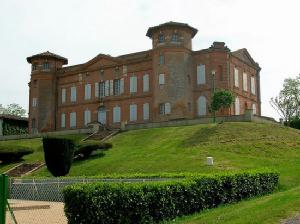
Commune which draws its richness from the 5 hamlets which compose it, thus proposing multiple landscapes and a varied inheritance: Churches, Castle.
L’Honor de Cos, unlike the majority of the villages, is made of five hamlets and not of a principal agglomeration. At the end of the XVIIIth century, five parishes decided to meet: Léribosc, Loubéjac, Aussac, Belpech and Saint Pierre of Angayrac. The name of Léribosc comes from wood which surrounded the church formerly. This one dates from the beginning of the XIVth century. It was ruined during the wars of religion, and was rebuilt in the current of the XVIIth century. The vault of left was added at the XIXth century.
In Loubéjac, the church was built only with the XIX th century and is dedicated to the nativity of Notre-Dame. The church overhangs Aveyron, at the foot of the castle. The current bell-tower goes back to 1918.
Aussac is located at the east of the commune. Its church, Saint Saturnin of Aussac, built at the end of the XV thcentury, was ruined during the wars of religion then restored between 1604 and 1626.
The church of Belpech, isolated on a plate, dates from Xth century. It, it also, was ruined during the wars of religion and was rebuilt at the XVII th century keeping like single vestige of the old church the vault of right-hand side.
Small rural church, Saint-Pierre of Angayrac, date as a whole from the XVII th century, except the bell which dates from the XVIth century.
Halfway between Montauban and Lafrançaise, Honor de Cos is today a common dynamics which has just opened an inter-commune arts centre.
Accommodation nearby
Visit Montastruc
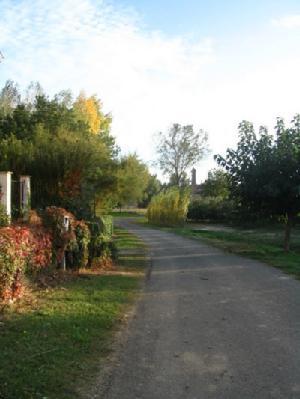
Small commune at the edge of Aveyron which offers to its visitor a pretty panorama, a religious heritage and the vestiges of a mill formerly inhabited by Jean Castela, celebrates it poet occitan.
The commune of Montastruc counts today 219 inhabitants and several associations animate the village.
Its name, of origin occitane means lucky, born under lucky star (“astruc”).
The origins of the village go back to the time of the Romans: ruins of Saint-Pierre are still found.
The church of Saint-Pierre de Campredon dates from the XIII rd century.
It burnt then was on several occasions rebuilt with the XVII th century.
Finally, it was entirely rebuilt in 1876 in a neo-gothic style.
The famous young elm of Pierre saint is recalled by a cross on a hillock.
The mill, today ruins some, goes back to the XIV th century and was rebuilt at the beginning of the XIX th. Its more famous miller is the poet occitan Jean Castela who took the succession of his father. The mill ceased functioning at the end of the XIX th century.
Accommodation nearby
Visit the village of Piquecos

Pretty village perched on the cliff which proposes a splendid point of view on the plains of the Tarn and the ford on Aveyron.
Piquecos, cut into two by Aveyron, supervises of its slope the plain of Aveyron, Montauban to the confluence of the Tarn and the Garonne. The village offers a splendid panorama of it.
The exact origins of the village are not known but several discoveries attest seniority of the site: troglodytic dwellings, military mound, potteries, axes out of stone and bronzes.
Piquecos is equipped with a castle, is built with the site of a fortress and is old oppidum Roman. The current castle was built between 1459 and 1510. Several famous characters remained there: Louis XI, François Ier, Henri IV, Anne of Austria or Louis XIII. It was several times burnt and renovated. There exists today an association, the Friends of the Castle of Piquecos, which organizes exposures, concerts and conferences within the castle. In the absence of being able to visit it, Piquecos also has a church, apart from the village. The building was rebuilt at the XIV thcentury and was rebuilt on several occasions after many destruction (wars of religion, Révolution). The frontage goes back from the XIX ème century and the bell of 1502!
At its sides, pigeon was restored by the municipality and a surface of picnic was arranged close to the ford which is practicable per annum from 10 to 12 months.
Accommodation nearby
Latest news on : Welcome to Sud Quercy of Lafrançaise
Tourism near
 Visit the city of Lafrancaise
Visit the city of Lafrancaise - 1 Museum
- 1 Monuments
Tours
 Castelsarrasin
Castelsarrasin
 Discover Montauban
Discover Montauban






















